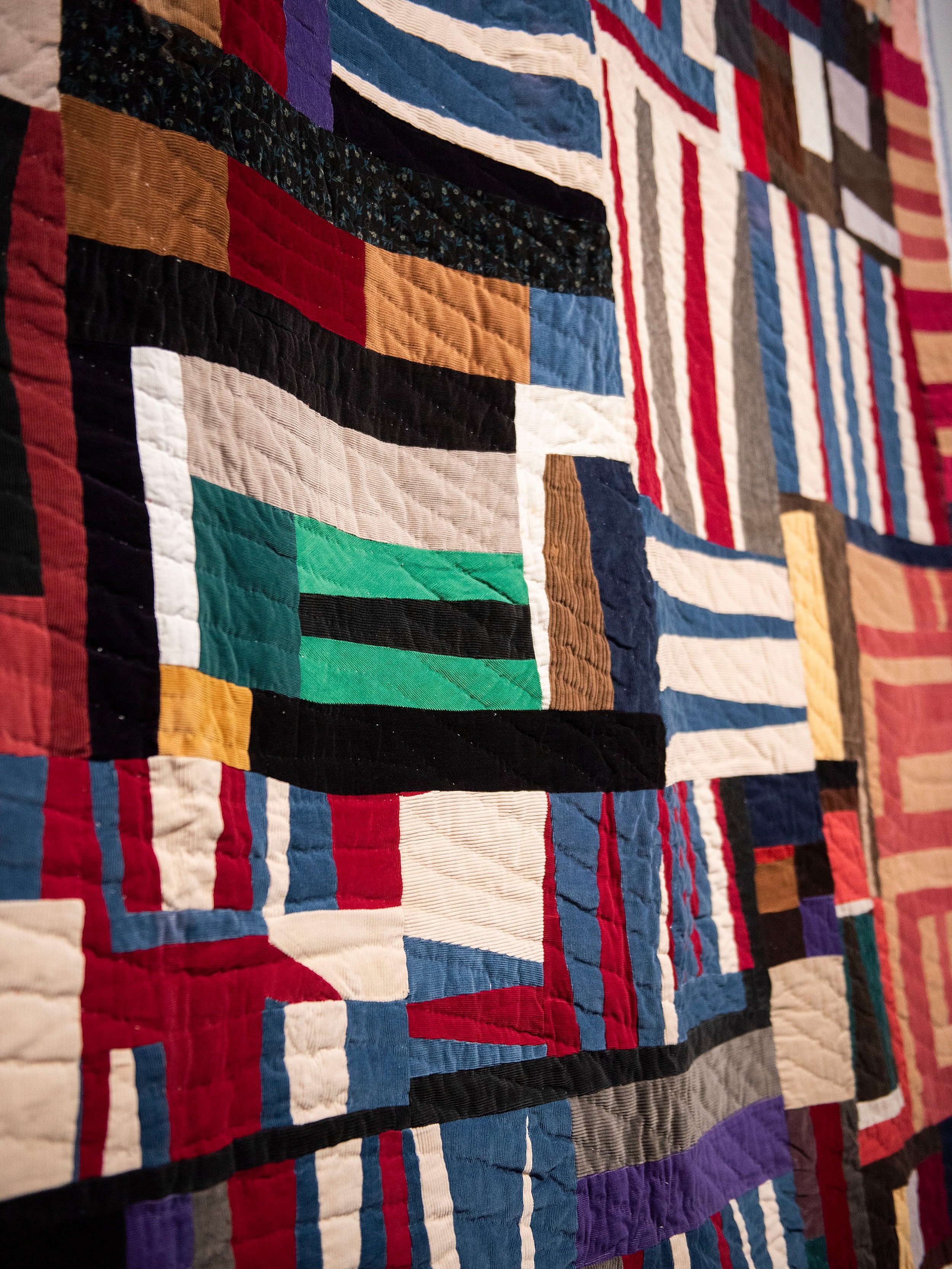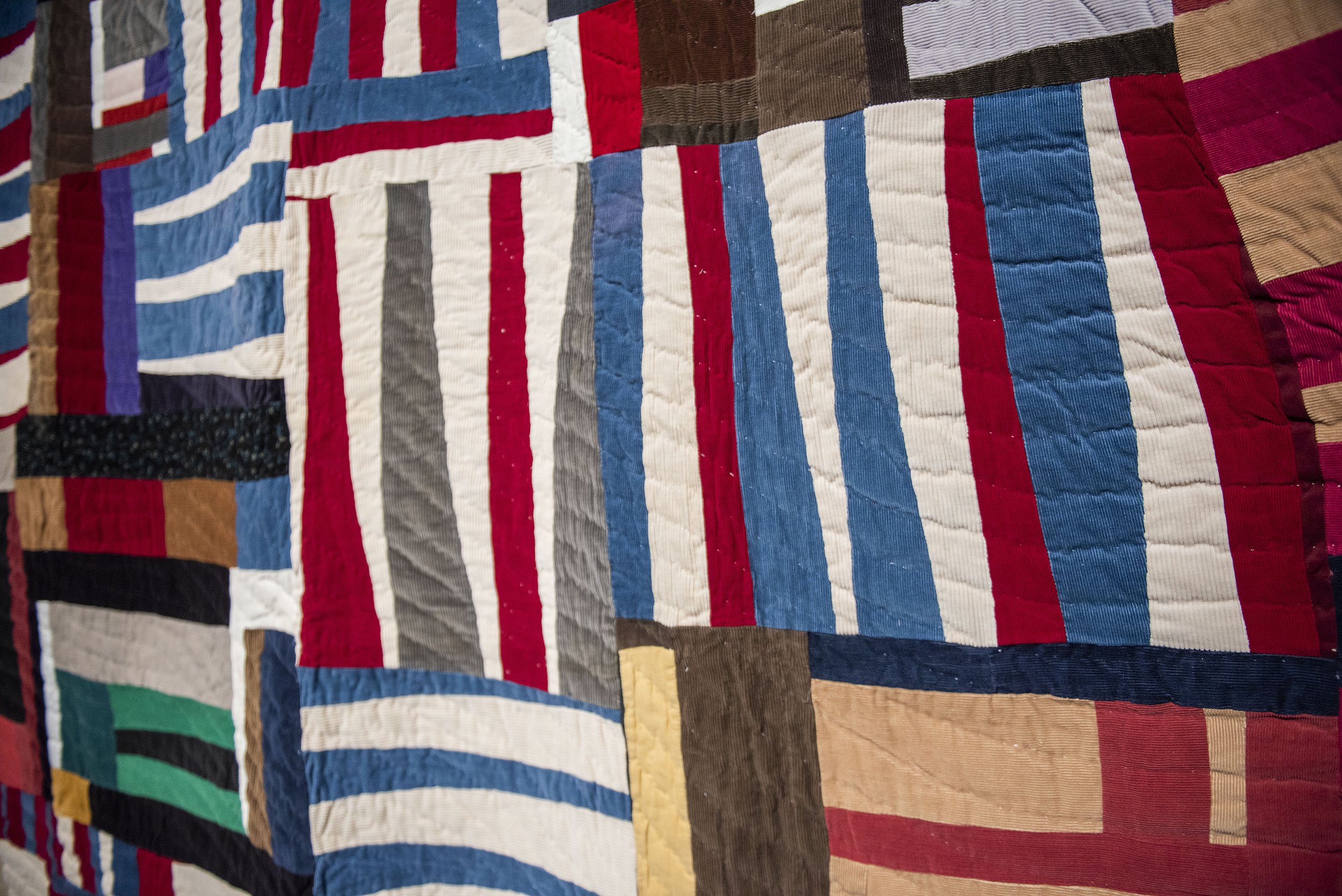Quilting has been a part of many cultures for centuries. However, there are some cultures that quilting has become synonymous with. The community of Gee’s Bend, Alabama is one example. Although quilting is instrumental to the community of Gee’s Bend, it is not merely because of creativity, but also necessity. These material marvels created by the women of Gee’s Bend to provide warmth for their families later became a symbol of American tradition. The quilts made by the women of Gee’s Bend (or Gee’s Bend Collective) are one of the most important and well-known visual and cultural contributions to African American and American history. LSU Museum of Art recently purchased a quilt by Gee’s Bend artist Mary Lee Bendolph, now on view in Art in Louisiana.
Gee’s Bend is an isolated, rural community surrounded by water on three sides, consisting of approximately 700 residents who are all related. The area is named after Joseph Gee, who established a cotton plantation in 1816 in the area with 17 enslaved persons. The plantation was later sold to Mark H. Pettway in 1845, which by then had grown to include over 100 enslaved people. Many of the residents can trace their ancestry and lineage back to these plantations.
When slavery ended, many of the residents remained on the land and worked as sharecroppers. When the Great Depression hit, this impacted the community so severely that they were identified as one of the poorest towns in the country by President Roosevelt, who later established programs to revitalize the community. During the Civil Rights Movement, Dr. Martin Luther King, Jr. visited Gee’s Bend and invited citizens to register to vote and march alongside him in Selma. Many of the women did register, and they were jailed. As a result of their activism, the local government canceled the local ferry–the easiest and quickest way to gain access to the community. This significantly limited their opportunities and activities outside of the community, and it nearly isolated the Bend completely. All of these factors have contributed to the late discovery of many of the renowned quilters we now know as the Gee’s Bend quilters. The Gee’s Bend quilters gained notoriety during the Civil Rights Movement during the Freedom Quilting Bee.
Mary Lee Bendolph (b. 1935) is one of the foremost quilters from the Gee’s Bend area. Bendolph inherited her love and talent for quilting from her foremothers. She was taught how to quilt at the age of twelve. When Bendolph retired in 1992, she dedicated her life to quilting. Her work was first exhibited in 2002 at the Houston Museum of Fine Arts alongside other members of the Gee’s Bend Quilting Collective. Like many African American quilters before her, Bendolph’s work rejects symmetry, continuity and uniformity. Many of the compositions, patternings, and piecing styles were passed down to each generation.
Untitled (strip quilt) consists of multicolored strips of cotton, corduroy and velvet enclosed/surrounded by the blue floral fabric on the outer edge. Strip quilting is a unique type of quilting that is attributed to the women of Gee’s Bend, and it can be traced back at least six generations. The notion of strips indicates straight lines and symmetry, but in strip quilts such as Bendolph’s it is evident that strips actually refer to organic forms created by merging the strips of fabric together. The fabrics were stitched together in both horizontal and vertical directions. The more prominent color choices–red, white, blue green, and pink are vibrant and contrast with the neutral colors–brown, beige, and gray. Upon closer inspection, you can see contrast of the textures in different fabrics and the impressive stitching done by Bendolph.
Bendolph’s compositions consist of old and salvaged cloths that create varied patterning and bold colors that are inspired by abstraction. The use of clothing worn by family and community members to create the quilts creates an index of Gee’s Bend. Indexicality is a concept most used in linguistics (the study of language) and semiotics (the study of signs and symbols). However, it is also used to explore social phenomena and identity. Social indexes are any sign such as clothing, speech patterns, table manners and even art that can alert the viewer to their identity. In the case of Gee’s Bend, these quilts and the recycled fabrics therein point to their history and culture. Their quilts act as a narrative of the community and heritage and paint a portrait of the quilter.
Written by Kirsten Campbell, LSU MOA Graduate Assistant
LSU MOA thanks Louisiana CAT for supporting graduate assistantships. Their support allows the museum to provide arts education and career experience to students.



